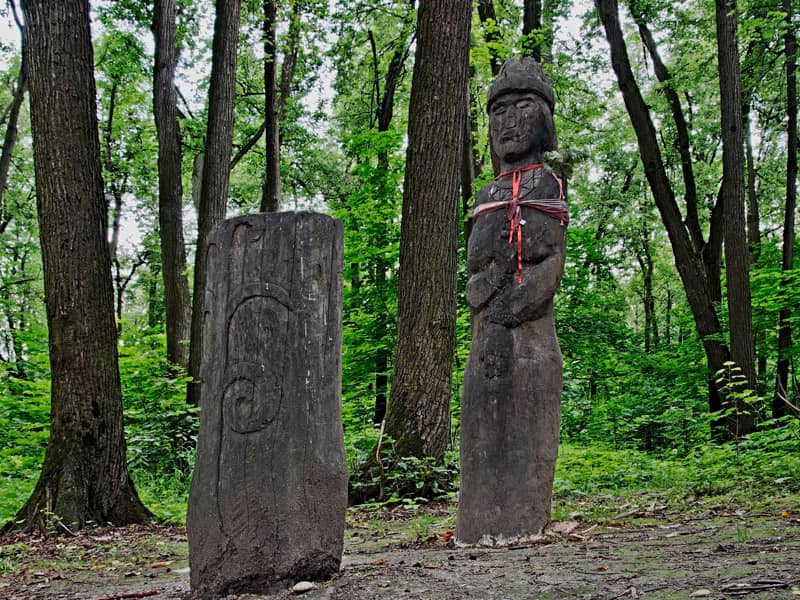Two years ago, Easter night, midnight. I am sitting on the front porch as the full moon sways in the swing of the eastern sky. I have just made love with my husband. The stars are bright. I wish upon a star, for a star to rise in me. Star, star, shining bright, start a star in me tonight.
The wish comes true. My daughter Lily is conceived.
Easter is named after the fertility goddess Oestre, from which our word "estrogen" comes. The symbols of rabbits and chicks and eggs are symbols of fertility. When all things rise again.
And now, with a toddler daughter and a 12-year-old stepdaughter in the house, I am feeling--despite the limp and luscious wisteria outside my open window, despite the daffodils still sparkling from last night's rain, despite my own dampness--that this spring is not a time for me to be fertile. Over the past few months, I have begun to admit to myself that sex may not ever again be connected to procreation for me. My husband and I are not planning to have any more children. And he has decided to have a vasectomy. And I am at a loss about what this means.
Then I realize this means Oestre is behind me now. And Beltane lies ahead.
Beltane, celebrated on May 1, is the next cross-quarter festival. Half way between Oestre at spring equinox and Litha at summer solstice, Beltane brings together the balance of opposites that happens at conception and the pinnacle of light, fruit, and green bounty that comes with birth. Beltane, then, is a festival of fertility and sexuality.
Desire. So perhaps, unlike Oestre, which is a festival of free fertility, Beltane asks us to celebrate something beyond the seed and before the fruit. To look at the full face of the flower itself.
A flower. A symbol of women's sexuality. So sweet and pure.
Why, then, am I afraid? Afraid of sexuality without fertility. Afraid of sex for its own sake.
I begin to look for other positive symbols of women's sexuality. I discover that in ancient--and not so ancient, really--churches in Ireland, there are figures of women with their vulva spread wide. Called Sheila-Na-Gigs, they are there to afford protection to the buildings. Lips parted and open, the shape resembles that of a fish. I think of this the next time I see a fish sticker on the bumper of a Christian's car here in the Bible Belt South. And I chuckle.
Sheila-Na-Gig is not the only figure who bares her flower in public. There is also Baubo, who drew laughter from Demeter, even in the midst of her grief, by telling dirty jokes. And in Japan, there is Uzume, who exposed herself and danced so bawdily that the wounded Amaterasu was enticed out of her cave.
All of these figures of bold female sexuality are older women. They are depicted with ribs sticking out, breasts sagging, teeth missing. Hags. Crones.
This means, I realize, they are post-menopausal. Beyond childbearing age. And yet so boldly and daringly sexual.
Could these figures provide a model for me as I move toward Beltane?
So now I must face the fact with courage that sex will no longer be sanctified somehow by my fertility and the possibility of procreation. I must face sex on my own terms--without sin or forgiveness, without babies or birth control--and learn the healing power of doing it because it is what I desire.
This must be why mythical figures who are depicted in art as open, sexual beings--Sheila-Na-Gig and Baubo and Uzume--are older women past menopause. Their desire does not lead to a product, an outcome. It is boldly and frankly for their own pleasure--not for an outcome but simply to come.
And this reclamation of pure desire holds strong healing and protective powers. Sheila-Na-Gig protects churches, where only the fiercest demons would dare enter with harmful intent. Baubo can soothe the pain of a mother who has lost her child. Uzume can bring a smile to the lips of a woman brutally wounded by her own brother. These figures provide models for me of the kind of raw healing force that is possible when I claim my own desire.
Beltane, at dawn. I get up, slowly, from the bed, so I don't wake my husband. Open the front door, slowly, so I don't wake the children. I walk to the southern side of the house where a red oak tree grows. I gently touch one drop of dew from a leaf, feel its cool, shiny power on my fingertip, and know that the first dew gathered from an oak on Beltane morning will grant a wish.
I am no longer wishing upon a star just after midnight. I am in the full light of day now, as the sun rises hot and orange in the east, and as I claim my own, independent sexual power.
The night before, I made love to my husband for the first time since his surgery. We will have no more offspring. But, with the help of Beltane's magic, we will make other kin.
We will make kin of our selves, our sex, our desire, our dreams, what needs to heal, to be held, to be wholed. It is our spirits that are fertile now.

